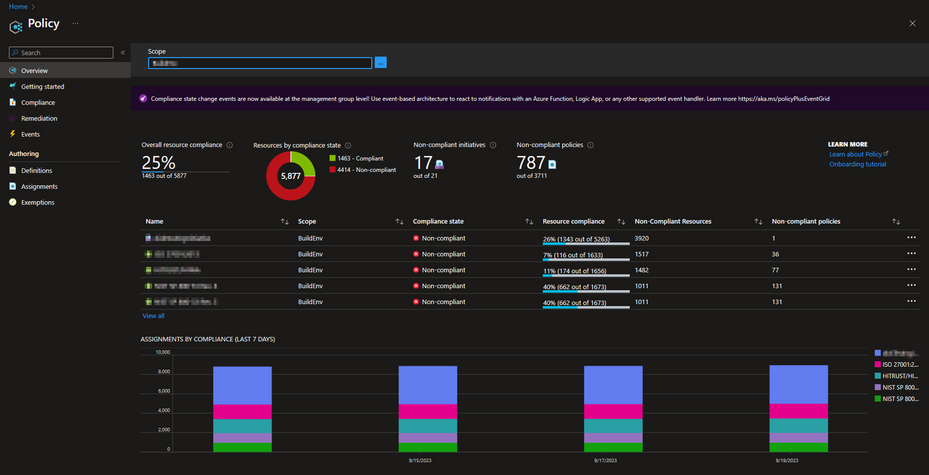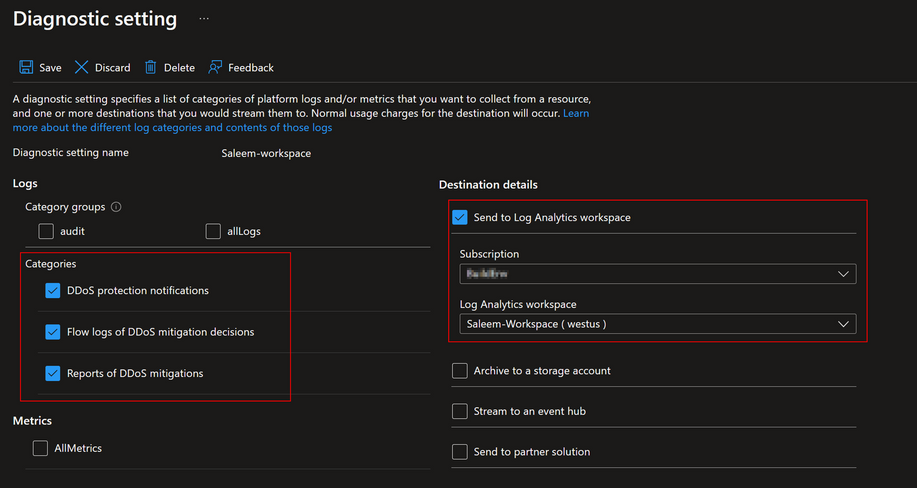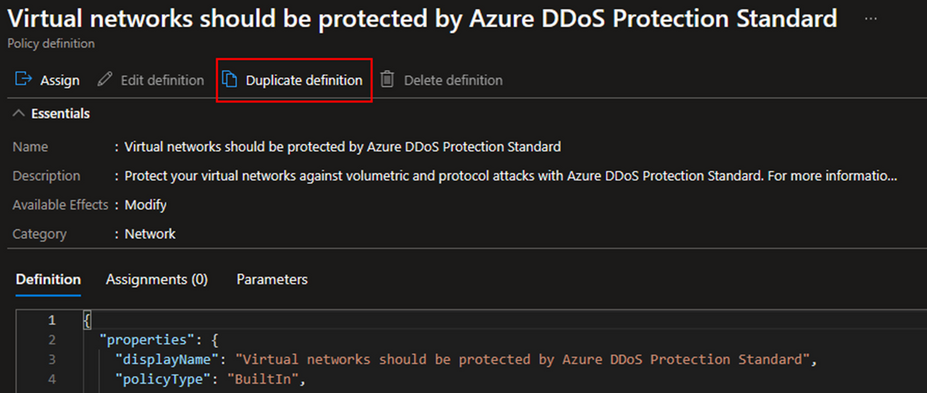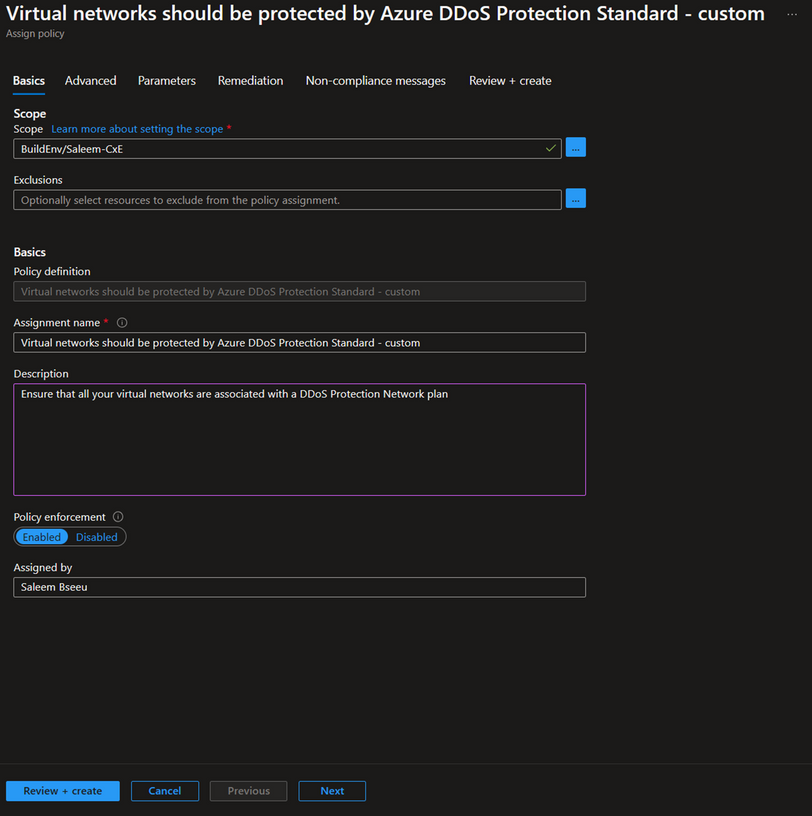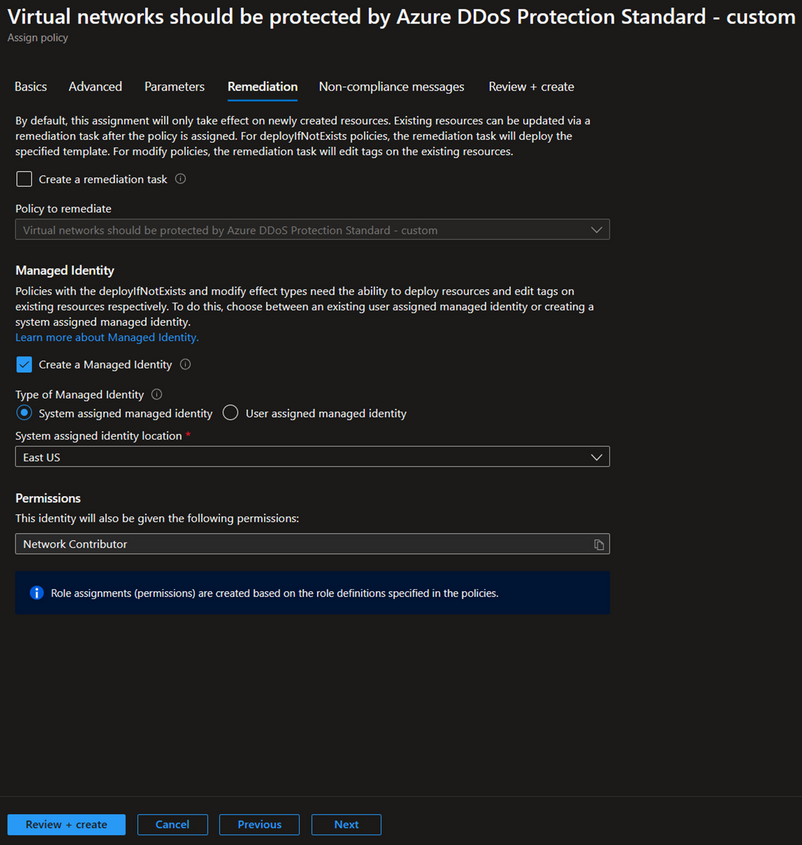Enforcing and Managing Azure DDoS Protection with Azure Policy

Introduction
In today's interconnected digital landscape, Distributed Denial of Service (DDoS) attacks have become a persistent threat to organizations of all sizes. These attacks can disrupt services, compromise sensitive data, and lead to financial losses. To counter this threat, Microsoft Azure offers robust DDoS protection capabilities. In this blog post, we will explore how organizations can leverage Azure Policy to enforce and manage Azure DDoS Protection, enhancing their security posture and ensuring uninterrupted services.
The main objective of this post is to equip you with the knowledge to effectively utilize the built-in policies for Azure DDoS protection within your environment. This includes enabling automated scaling without the need for manual intervention and ensuring that DDoS protection is enabled across your public endpoints.
Understanding Azure DDoS Protection
Microsoft Azure DDoS Protection is a service designed to protect your applications from the impact of DDoS (Distributed Denial of Service) attacks. These attacks aim to overwhelm an application’s resources, rendering it inaccessible to legitimate users. Azure DDoS Protection provides enhanced mitigation capabilities that are automatically tuned to protect your specific Azure resources within a virtual network. It operates at both layer 3 (network layer) and layer 4 (transport layer) to defend against volumetric and protocol attacks.
Azure Policy Overview
Azure Policy is an integral part of Azure Governance, offering centralized automation for enforcing and monitoring organizational standards and compliance across your Azure environment. It streamlines the deployment and management of policies, ensuring consistency in resource configurations. Azure Policy is a powerful tool for aligning resources with industry and organizational security standards, reducing manual effort, and enhancing operational efficiency.
Benefits of Using Azure Policy for DDoS Protection
1- Consistency Across Resources:
Azure Policy enables you to establish a uniform DDoS protection framework across your entire Azure environment. This consistency ensures that no resource is left vulnerable to potential DDoS attacks due to misconfigurations or oversight.
2- Streamlined Automation:
The automation capabilities provided by Azure Policy are great for managing DDoS protection. Instead of manually configuring DDoS settings for each individual resource, Azure Policy allows you to define policies once and apply them consistently across your entire Azure infrastructure. This streamlining of processes not only saves time but also minimizes the risk of human error in policy implementation.
3- Enhanced Compliance:
Adherence to industry and organizational security standards is a top priority for businesses of all sizes. Azure Policy facilitates compliance by allowing you to align your resources with specific security baselines. By enforcing DDoS protection policies that adhere to these standards, you can demonstrate commitment to security and regulatory compliance, thereby improving the trust of your customers and partners.
Built-In Azure DDoS Protection definitions
Note: Azure Standard DDoS Protection has been renamed as Azure DDoS Network Protection. However, it's important to be aware that the names of the built-in policies have not yet been updated to reflect this change.
Azure DDoS Protection Standard should be enabled
This Azure policy is designed to ensure that all virtual networks with a subnet that have an application gateway with a public IP, have Azure DDoS Network Protection enabled. The application gateway can be configured to have a public IP address, a private IP address, or both. A public IP address is required when you host a backend that clients must access over the Internet via an Internet-facing public IP. This policy ensures that these resources are adequately protected from DDoS attacks, enhancing the security and availability of applications hosted on Azure.
For detailed guidance deploying Application gateway with Azure DDoS protection, see here: Tutorial: Protect your application gateway with Azure DDoS Network Protection - Azure Application Gateway | Microsoft Learn
Public IP addresses should have resource logs enabled for Azure DDoS Protection Standard
This policy ensures that resource logs for all public IP addresses are enabled and configured to stream to a Log Analytics workspace. This is important as it provides detailed visibility into the traffic data and DDoS attack information.
The diagnostic logs provide insights into DDoS Protection notifications, mitigation reports, and mitigation flow logs during and after a DDoS attack. These logs can be viewed in your Log Analytics workspace. You will get notifications anytime a public IP resource is under attack, and when attack mitigation is over. Attack mitigation flow logs allow you to review the dropped traffic, forwarded traffic, and other interesting data-points during an active DDoS attack in near-real time. Mitigation flow logs offers regular reports on DDoS mitigation, with updates provided every 5 minutes. Additionally, a post-mitigation report is generated for a comprehensive overview.
This policy ensures that these logs are properly configured and streamed to a Log Analytics workspace for further analysis and monitoring. This enhances the security posture by providing detailed insights into traffic patterns and potential security threats while also providing a scalable way to enable telemetry without manual work.
Virtual networks should be protected by Azure DDoS Protection
This policy is designed to ensure that all your virtual networks are associated with a DDoS Protection Network plan. This policy scans your Azure environment and identifies any virtual networks that do not have the DDoS Protection Network plan enabled. If such a network is found, the policy can optionally create a remediation task. This task will associate the non-compliant virtual network with the specified DDoS Protection Plan. This policy helps maintain the security and integrity of your Azure environment by enforcing the best practices for DDoS protection.
We also have a more granular version of this policy, called "Virtual Networks should be protected by Azure DDoS Protection Standard - tag based". This policy allows you to audit only those VNets that carry a specific tag. This means you can enable DDoS protection exclusively on VNets that contain your chosen tag. While this feature, you can deploy it directly from our GitHub repository: Azure-Network-Security/Azure DDoS Protection/Policy - Azure Policy Definitions/Policy - Virtual Networks should be enabled with DDoS plan at master · Azure/Azure-Network-Security (github.com)
Implementing Azure Policy for DDoS Protection
Defining the Policy
The first step starts with the selection of policy definitions. Given that we already have a set of built-in policies at our disposal, we will choose one of them. In the 'Definitions' section, search for 'DDoS'. For the purposes of this tutorial, I will use the definition titled 'Virtual networks should be protected by Azure DDoS Protection Standard.' Upon opening this definition, you can read its description and look at the definition logic.
If you wish to modify the built-in definition before assigning it, you can select the duplicate option to create a copy of it. Choose a name for your duplicated definition, specify its category, and provide a customized description. After saving your changes, a new definition will be created, complete with your changes and categorized as a custom definition.
Policy Assignment and Scope
For the next step let’s start assigning our policy definition. To do this, select the 'Assign' option located in the top left corner under the definition. The first section you'll see is 'Scope'. Here, select the subscription where you want the policy to be active. For a more granular approach, you can also select a specific resource group. In the 'Basics' section, you have the option to change the assignment name and add a description.
Note: Make sure to select 'Enabled' under policy enforcement if you want the policy to be actively enforced. If you only want to identify which resources are compliant without enforcing the policy, you can leave this setting as 'Disabled'. For more information about policy enforcement, here Details of the policy assignment structure - Azure Policy | Microsoft Learn
Next, go to the ‘Parameters’ section and choose the DDoS protection plan that you intend to use for protecting your VNets. This selected plan will be used to add your VNets to it.
The final section is 'Remediation'. Here, you have the option to create a remediation task. This means that when the policy is created, the remediation will apply not only to newly created resources but also to existing ones. If this aligns with your desired outcome, check the box for 'Create a remediation task' and select the DDoS policy.
Since our policy has a modify effect, it requires either an existing user-assigned managed identity or a system-assigned managed identity. The portal will automatically provide an option to create a managed identity with the necessary permissions, which in this case is 'Network Contributor'. To learn more about managed identity, see here Remediate non-compliant resources - Azure Policy | Microsoft Learn
Policy Enforcement Best Practices
1- Granularity: Policies should be customized to match the specific needs of different resource types and their importance levels. For example, not all VNets may need DDoS protection, and applying a one-size-fits-all policy across all resources could lead to unnecessary expenses. That’s why it’s important to evaluate the needs of each resource. Resources that handle sensitive data or are vital for business operations may need stricter policies compared to those that are less important. This approach ensures that each resource is properly secured while also being cost-effective.
2- Testing: Before deploying policies to critical resources, it’s recommended to test them in a non-production environment. This allows you to assess the impact of the policies and make necessary adjustments without affecting your production environment. It also helps in identifying any potential issues or conflicts with existing configurations.
3- Monitoring: Regularly reviewing policy compliance is crucial for maintaining a secure and compliant Azure environment. This involves checking the compliance status of your resources and adjusting policies as necessary based on the review. Azure Policy provides compliance reports that can help in this process. For more information on how to get compliance data or manually start an evaluation scan, see here Get policy compliance data - Azure Policy | Microsoft Learn
Conclusion
Using Azure Policy to enforce and manage Azure DDoS Protection is an essential part of a proactive and comprehensive security strategy. It allows you to continuously monitor your Azure environment, identify non-compliant resources, and take corrective action promptly. This approach not only enhances the security of your applications but also contributes to maintaining their availability and reliability.
Resources
Azure DDoS Protection Overview | Microsoft Learn
Overview of Azure Policy - Azure Policy | Microsoft Learn
Details of the policy definition structure - Azure Policy | Microsoft Learn
Understand scope in Azure Policy - Azure Policy | Microsoft Learn
Deploying DDoS Protection Standard with Azure Policy - Microsoft Community Hub
Published on:
Learn moreRelated posts
Automating Business PDFs Using Azure Document Intelligence and Power Automate
In today’s data-driven enterprises, critical business information often arrives in the form of PDFs—bank statements, invoices, policy document...
Azure Developer CLI (azd) Dec 2025 – Extensions Enhancements, Foundry Rebranding, and Azure Pipelines Improvements
This post announces the December release of the Azure Developer CLI (`azd`). The post Azure Developer CLI (azd) Dec 2025 – Extensions En...
Unlock the power of distributed graph databases with JanusGraph and Azure Apache Cassandra
Connecting the Dots: How Graph Databases Drive Innovation In today’s data-rich world, organizations face challenges that go beyond simple tabl...
Azure Boards integration with GitHub Copilot
A few months ago we introduced the Azure Boards integration with GitHub Copilot in private preview. The goal was simple: allow teams to take a...
Microsoft Dataverse – Monitor batch workloads with Azure Monitor Application Insights
We are announcing the ability to monitor batch workload telemetry in Azure Monitor Application Insights for finance and operations apps in Mic...
Copilot Studio: Connect An Azure SQL Database As Knowledge
Copilot Studio can connect to an Azure SQL database and use its structured data as ... The post Copilot Studio: Connect An Azure SQL Database ...
Retirement of Global Personal Access Tokens in Azure DevOps
In the new year, we’ll be retiring the Global Personal Access Token (PAT) type in Azure DevOps. Global PATs allow users to authenticate across...
Azure Cosmos DB vNext Emulator: Query and Observability Enhancements
The Azure Cosmos DB Linux-based vNext emulator (preview) is a local version of the Azure Cosmos DB service that runs as a Docker container on ...
